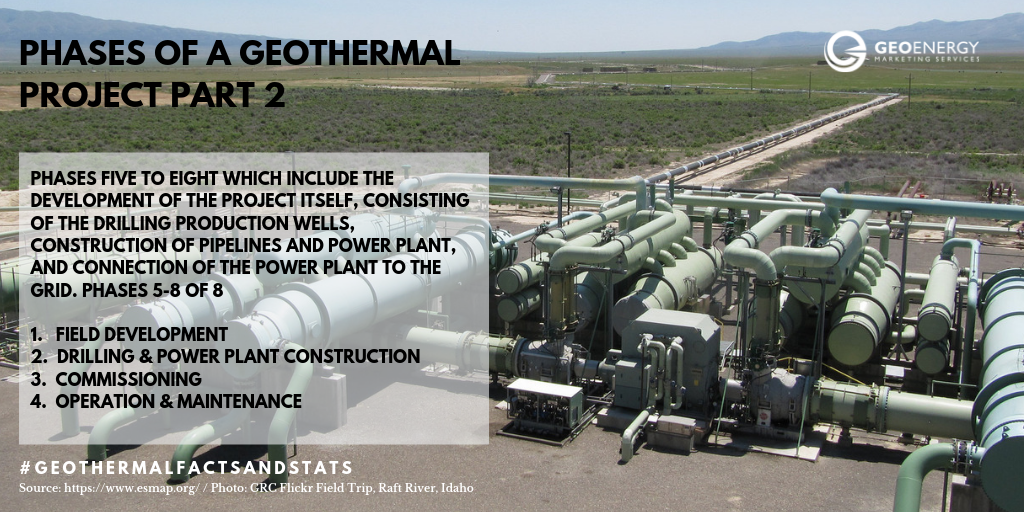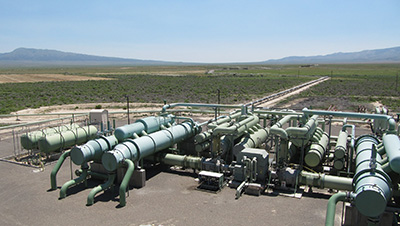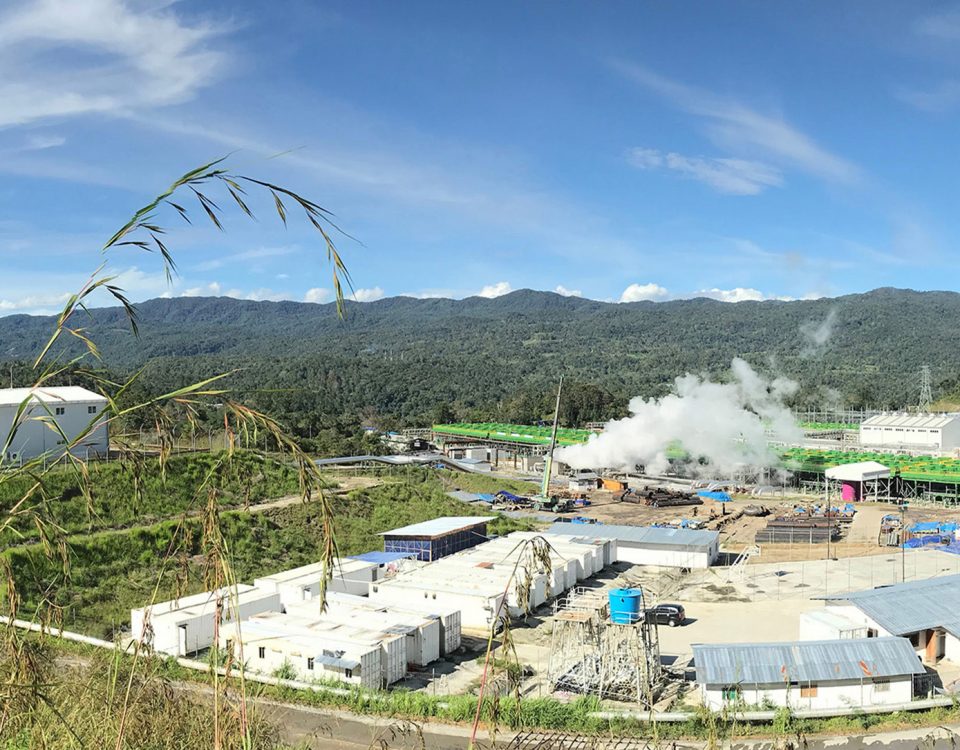In our previous #GeothermalFactsandStats post on Geothermal Project Phases, we introduced the first four (4) phases of developing and planning a geothermal project. These phases dealt with the preliminary studies and testing which led to the design of the power project if the geothermal resource under investigation was confirmed. In this post, we will describe phases five to eight which include the development of the project itself, consisting of the drilling of geothermal production wells, construction of pipelines and power plant, and connection of the power plant to the grid. These phases that will be described are as follows:
- Preliminary survey
- Surface Exploration
- Test drilling
- Project review and planning
- Field development
- Power plant construction and production drilling
- Commissioning
- Operation and maintenance
This phase marks the beginning of the actual development of the power project and consists of drilling production and reinjection wells, and partially constructing the pipelines to complete the strategy of field development according to the power capacity target. Depending on the drilling program and the well drilling pad, one or more drilling rigs are required. A commonly used rule of thumb is that every successful production well will produce 5 MW of electrical power in the power plant. The detailed engineering, procurement and construction of the geothermal power plant and associated substation and transmission lines are done simultaneously with the production and reinjection well drilling. In most geothermal projects, over 50 percent of the total investment for a geothermal development will be related to exploration and drilling phase. The field development and production drilling program depend on how much time takes to drill well and how many well are required. The range of investment for geothermal development is 1.2 to 2 million per megawatt installed; these costs can vary considerably from installation to installation.
The well drilling program requires careful integration of a range of supplies (rigs, casing, drill rods, drilling chemicals, drilling mud etc) and any well completion should be followed by well testing and perhaps tracer testing to assess production and subsurface conditions. This enables the conceptual model to be continuously updated and refined, and any previous interpretations to be tested. The numerical model also is updated. Some excess production capacity should be included in the planning and allowed for in the operating costs. A realistic decline rate for geothermal wells should be accounted for. While drilling is being conducted, the developer also needs to secure finance for power plant construction. Once the resource is confirmed, the risks of the project are significantly reduced, and debt financing becomes available on commercial terms. Such finance is usually not available until a PPA has been signed, and the design and contracting of the power plant construction has been committed.
Power plant construction and production drilling
This phase comprises installation of the steam gathering system or SAGS (a system of steam pipelines from the wellheads to the power plant and back for the reinjected fluids); the separators; the power plant with the turbine, generator, and the condenser. The completion of the steam gathering system is coordinated with any necessary civil works and infrastructure to allow the power plant to be constructed. The electricity generated is sent to a substation and from there to the transmission grid. Power plants are often constructed using Engineering Procurement and Construction contracts.
After utilization (expansion) of the steam, the cooled geothermal fluids are usually reinjected into the reservoir to be reheated and to maintain the pressure or avoid reservoir depletion. The electricity generated is sent to a substation and from there to the transmission grid. For a 50 MW power plant unit, the costs for the construction phase of project development are, on a turnkey basis, usually in the range of US$ 1 to 2 million per megawatt installed. The cost estimates do not include the transmission line or the substation, which is needed to connect the power plant to the grid, as these costs can vary considerably from installation to installation.
Commissioning
Start-up and commissioning of the power plant is the final phase before the plant starts regular operation. The main focus serves to optimize the production and injection system to enable the most efficient energy recovery and utilization. This helps to minimize operational costs, maximize investment returns, and ensure the reliable delivery of geothermal power. New production and reinjection wells may be needed to make up for any decline in productivity or adjustment of the reinjection strategy as the resource responds to exploitation. Technical and contractual issues are usually resolved with the supplier of the plant in this phase. The power plant engineering and construction company, often an engineering procurement, and construction (EPC) contractor gets its performance guarantees returned as soon as the plant passes the minimum performance conditions defined in the contract. Providing these guarantees and bonds involves extra costs for the project developer and the EPC contractor. Fine tuning the efficiency of the power plant and all other equipment, including the pressures from the wells can take several months to complete. Costs for this phase are part of the investments in Phase 6.
Operation and Maintenance
Here, the operational phase begins. Operation and maintenance can be divided into the O&M for the steam field (wells, pipelines, infrastructure, etc.) and the O&M of the power plant (turbine, generator, cooling system, substation, etc.). Proper maintenance of all facilities is crucial to ensure a high availability factor and capacity factor for the power plant and to ensure steady steam production from the geothermal wells. The operations of a power plant need well-trained technical staffs – for a fully automated 50 MW geothermal power plant approximately 20 technicians are required.
The O&M for the steam field consists of cleaning existing wells, drilling new ones from time to time to regain lost capacity, and maintaining other equipment in the field. For example, a 50 MW power plant unit would have estimated costs for these activities in the range of US$ 1 to 4 million per year, depending on fluid chemistry, geology, the quality of the wells, and other factors. For the power plant unit, the maintenance costs are often estimated at 1.5 to 2.5 percent of the investment (purchase price) of the power plant. These figures depend heavily on the chemical composition of the geothermal fluids. Based on the assumptions above, total O&M costs for a 50 MW power plant in a developing or developed country would be in the range of US$ 3.5 to 10.5 million per year. These costs can be translated into US$ 0.009 to 0.027 per generated kilowatt hour, based on a 90 percent capacity factor.
Stay tuned for more #GeothermalFactsandStats on all our platforms!
Sources:
- http://decarboni.se/sites/default/files/publications/138043/geothermal-exploration-best-practices-guide-resource-data-collection-analysis-presentation-geothermal-projects.pdf
- https://www.esmap.org/sites/esmap.org/files/DocumentLibrary/FINAL_Geothermal%20Handbook_TR002-12_Reduced.pdf
- https://orkustofnun.is/gogn/unu-gtp-sc/UNU-GTP-SC-22-05.pdf
- https://www.energy.gov/sites/prod/files/GeothermalEnergyDevelopmentOverview_Presentation.pdf
- https://esmap.org/sites/default/files/esmap-files/Flovenz%20Day%201%20-WB-2-phases-final.pdf
- https://rafhladan.is/bitstream/handle/10802/14467/UNU-GTP-SC-23-0907.pdf?sequence=1
- http://theargeo.org/fullpapers/Geothermal%20Project%20Timelines.pdf
- Photo credit: https://www.flickr.com/photos/geothermalresourcescouncil/19054078706/in/album-72157654615290141/
Author: Elizabeth Bullock



